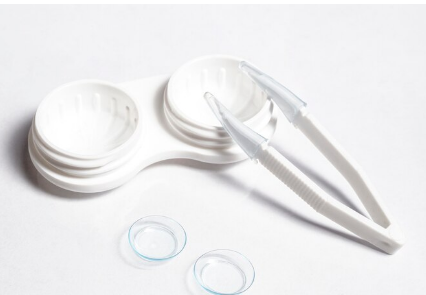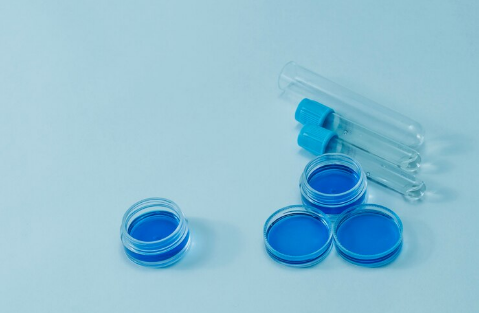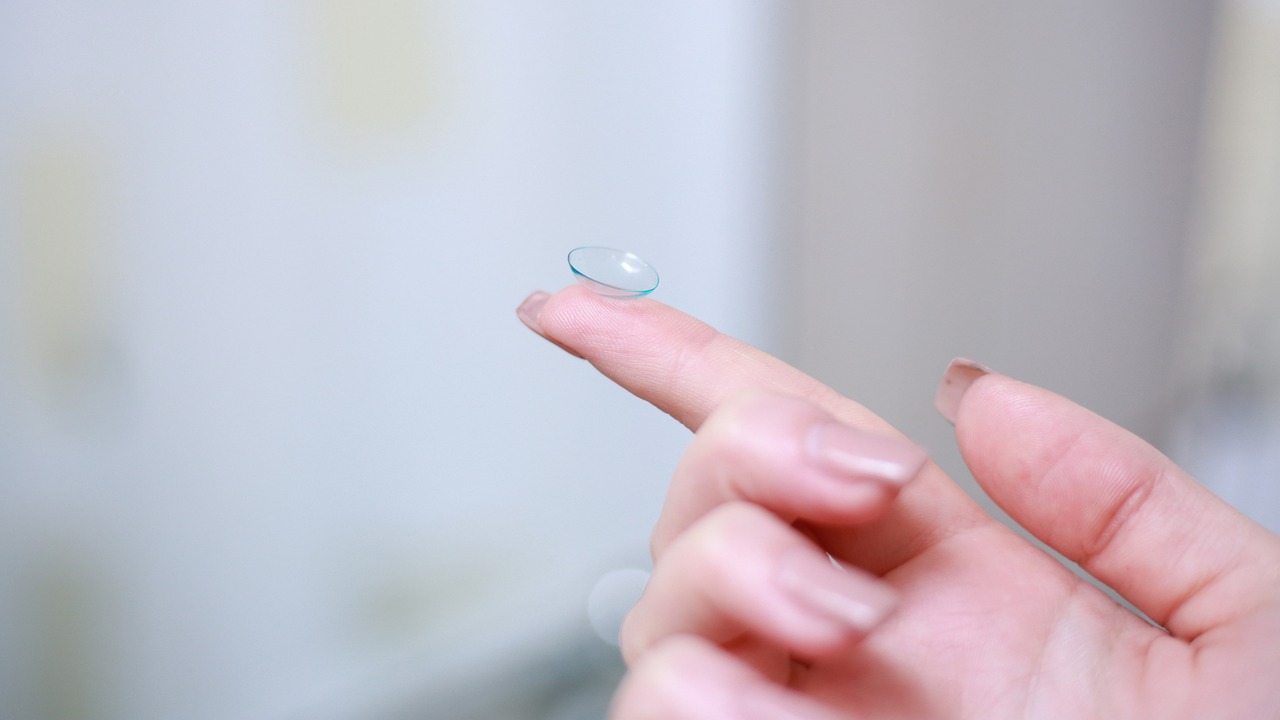How to Avoid Ripping Contact Lenses

Tearing a contact lens can be frustrating, and you might wonder why they aren’t made from a stronger material. The reality is that over 45 million Americans wear contact lenses, and most prefer soft lenses because they are incredibly comfortable.
The soft material used in these lenses allows a lot of oxygen to reach the cornea, which is essential for keeping your eyes healthy.
However, this comfort comes at a cost—soft lenses are more prone to damage compared to harder materials. While the design prioritizes eye health and comfort, it also makes them more delicate.
Table of Contents
Causes of Ripping Contact Lenses
Ripping contact lenses can be frustrating, but knowing these common causes can help you avoid it.
Rough Handling During Insertion and Removal
One of the main reasons contact lenses rip is due to rough handling. When inserting or removing lenses, if you're not gentle, it’s easy to tear them. Pulling or tugging too hard, especially when the lenses are dry, can cause damage. It's important to always handle them with care, making sure your fingers are clean and dry before touching the lenses.
Dry or Brittle Lenses
Lenses need to stay moist to remain flexible and durable. If they become dry, especially after being worn for extended periods, they can become brittle and more likely to rip.
Lenses that are exposed to air for too long, or lenses that dry out in their case, lose their softness. Always keep your lenses in the recommended solution when not in use, and avoid wearing them longer than the prescribed time.
Long Fingernails
Long fingernails are a common cause of ripped contact lenses. Nails can easily snag or scratch the delicate lens material during handling.
To prevent this, consider trimming and filing your nails regularly, or use the pads of your fingers rather than your nails when inserting or removing your lenses.
Incorrect Storage or Cleaning
Improper storage and cleaning are also major factors. Using the wrong cleaning solution or skipping the cleaning process altogether can weaken your lenses over time.
Additionally, storing them in an old or dirty lens case can cause them to become fragile. Make sure to follow the instructions for cleaning your lenses and replace your lens case regularly to keep them in good condition.
Expired or Poor-Quality Lenses
Contact lenses, like many products, have an expiration date. Using expired lenses means you are using lenses that have likely degraded and are more prone to tearing. Similarly, low-quality lenses might not be as durable as higher-end ones.
Always check the expiration date on your lens packaging and consider investing in good-quality lenses to reduce the chances of them ripping.
By being mindful of these common causes, you can help protect your contact lenses and extend their lifespan.
Best Practices to Prevent Lens Ripping
Preventing your contact lenses from ripping requires adopting good habits and careful handling. Following these best practices can help keep your lenses intact and extend their lifespan.
Keep Your Hands and Lenses Clean
One of the simplest yet most effective ways to prevent lens tearing is by ensuring your hands and lenses are always clean. Before touching your lenses, thoroughly wash and dry your hands. Oils, dirt, and residues on your fingers can make lenses more slippery or fragile, increasing the chance of a tear.
Additionally, cleaning your lenses daily with the proper solution helps to maintain their flexibility and prevent buildup that can weaken the lens material.
Trim and File Fingernails
Long or sharp fingernails are a common cause of lens ripping. To avoid this, it's best to keep your nails trimmed and smooth. Even a small snag from a rough nail edge can cause a lens to tear while you're inserting or removing it.
If you prefer longer nails, try to use the pads of your fingers to handle the lenses, keeping your nails away from the lens surface as much as possible.
Avoid Sharp Objects Near Your Eyes
Be cautious of any sharp objects that may come in contact with your lenses. Tweezers, makeup brushes, or even jewelry can cause accidental damage to your lenses.
When applying makeup, especially around your eyes, always put your lenses in first to avoid brushing or scratching them with tools. This not only protects your lenses but also ensures your vision is clear while applying makeup.
Handle with Care During Insertion and Removal
Always be gentle when inserting or removing your contact lenses. Avoid pinching too hard or using excessive force, especially if the lenses feel dry or stiff. If the lens sticks to your finger or seems difficult to remove, use a few drops of rewetting solution to moisten it before trying again. Patience and careful handling go a long way in preventing rips and tears.
Unfold Lenses in Solution
If a lens accidentally folds, resist the urge to pull it apart with your fingers, as this can easily result in a tear. Instead, place the folded lens in the palm of your hand with some saline solution. Gently massage the lens while it's submerged until it naturally unfolds. The moisture will help it open without damage.
Keep Lenses Moist
Dry lenses are much more prone to tearing. Never store your lenses dry; always keep them in the proper solution. If your lenses feel dry while in your eyes, use rewetting drops before attempting to remove them. Avoid using water or any liquid other than contact solution, as these can damage the lenses or cause them to tear more easily.
Keep the Lens Case Full
When storing your lenses, make sure to fill your lens case with enough solution. If the case is only partially full, the lens might stick to the dry areas of the case, making it easier to tear when you remove it. Always ensure the lenses are fully submerged in solution to avoid this issue.
Ask About the Modulus
Not all contact lenses are the same, and one important factor is the modulus, which measures how resistant a lens material is to bending or tearing. Lenses with a higher modulus are slightly stiffer and easier to handle, reducing the risk of tearing.
On the other hand, lenses with a lower modulus are more flexible and contain more water, making them softer and more comfortable but also more prone to tearing.
If you frequently have issues with your lenses tearing, ask your eye doctor about the best modulus for your needs. They can recommend a balance between comfort and durability.
What to Do if a Lens Rips?
Dealing with a ripped contact lens can be inconvenient, but knowing how to handle the situation properly can protect your eyes and save you discomfort. Here’s what to do if your contact lens tears.
- Stop Using the Ripped Lens Immediately
The first and most important step is to stop using the ripped lens right away. Even a small tear can make the lens uncomfortable and cause irritation or scratching on the surface of your eye. Continuing to wear a damaged lens can lead to serious eye issues, including infections or corneal damage. It’s best to remove it as soon as you notice the tear.
- Check the Other Lens
If one of your lenses rips, it’s a good idea to check the other one for signs of damage, too. Sometimes lenses may be nearing the end of their usable life, and if one lens rips, the other may not be far behind. Inspect both lenses carefully under good light for any small tears, scratches, or rough edges.
- Have a Backup Pair Ready
Always keep a backup pair of lenses or glasses handy for situations like this. If a lens rips unexpectedly, having a spare set will save you from being without corrective vision. If you don’t have backup lenses, switching to your glasses temporarily is the safest option until you can replace the damaged lens.
- Avoid Trying to Repair the Lens
It may be tempting to try and fix a ripped lens, but this is not advisable. Even the smallest tear makes the lens unsafe for your eyes. Attempting to smooth out or repair the lens can make the situation worse, as it won’t function properly and could lead to discomfort or eye irritation.
- Replace the Ripped Lens
The best solution is to replace the ripped lens with a new one. Contact your eye care provider if you’re unsure about ordering replacements or if you need a temporary supply. Some eye care professionals may provide emergency lenses in case of situations like these, ensuring you don't go without proper vision correction.
- Monitor Your Eyes for Any Discomfort
If you wore the ripped lens before noticing the damage, keep an eye on any discomfort or irritation in your eyes.
If you feel any lingering pain, redness, or sensitivity to light, contact your eye care provider as soon as possible. It’s essential to address any potential eye health concerns early to avoid further issues.
By acting quickly and following these steps, you can safely deal with a ripped contact lens and protect your eyes from harm.
Final Words
If your contact lens tears, it’s important to stop wearing it, even if the tear seems small. A torn lens can have sharp edges that may scratch your cornea, causing irritation or injury. To safely remove the torn lens, first wash your hands thoroughly.
Apply some rewetting solution to the lens to ensure it’s fully lubricated, which will help prevent any pieces from sticking to your eye.
Gently pull down your lower eyelid using your thumb and forefinger, and with your index finger, slide the largest section of the torn lens down toward the lower part of your eye.
Once it's in position, use your thumb and forefinger to carefully remove the lens. Afterward, check your eye to make sure no small pieces of the lens remain.



